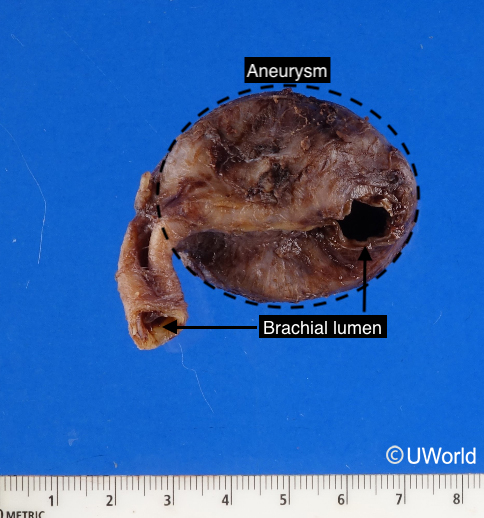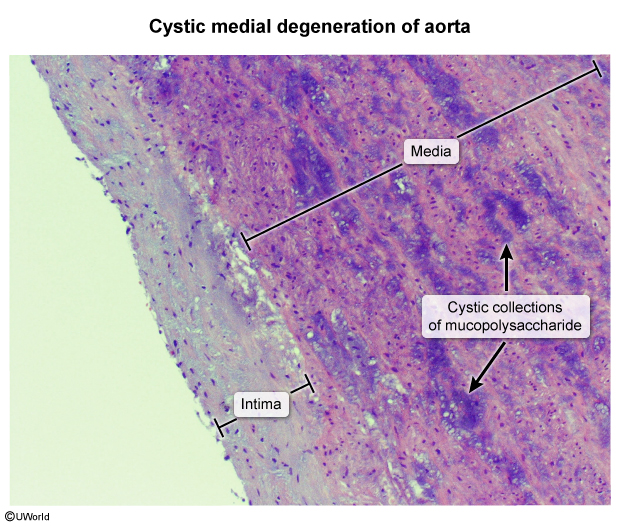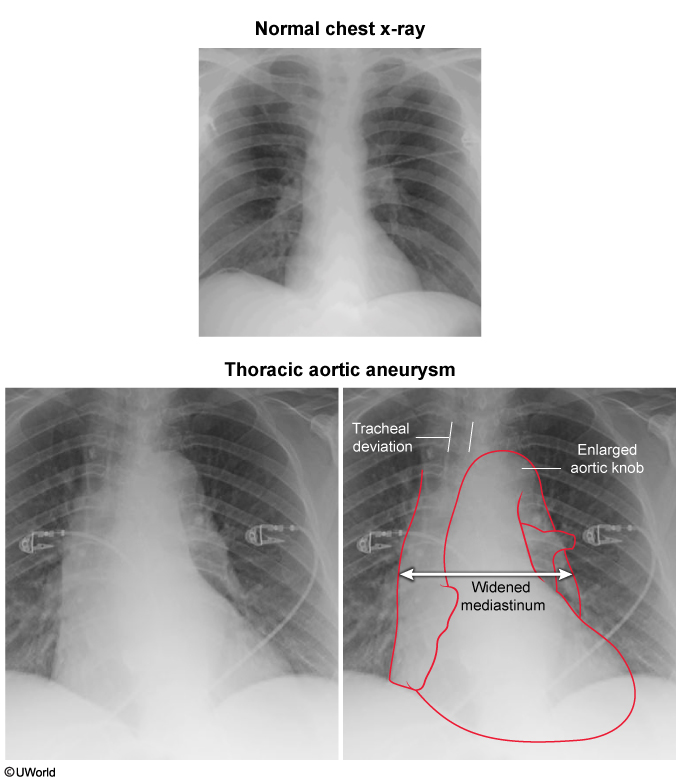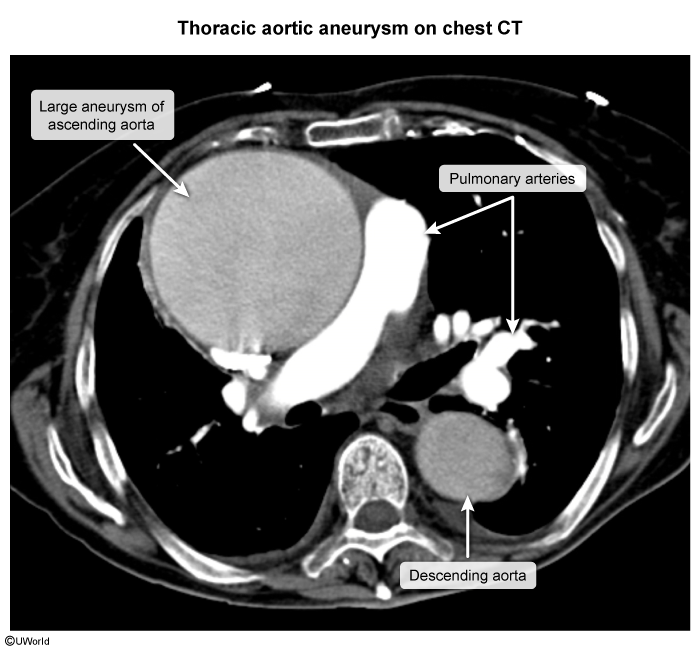Aortic Aneurysm: Thoracic And Abdominal
Article Sections
Introduction
Aortic aneurysm is a focal dilation of the aorta resulting from aortic wall weakening that leads to an outcropping of the arterial wall. Aortic aneurysms are divided into 2 major categories based on their location:
- Thoracic aortic aneurysm (TAA)
- Abdominal aortic aneurysm (AAA)
TAA and AAA are similar in pathophysiology but differ somewhat in risk factors and management. Recognition of an aortic aneurysm is important because large aortic aneurysms are at risk of rupture and catastrophic hemorrhage.
Pathophysiology
Aortic aneurysm is an outcropping of the full thickness of the aortic wall (all 3 layers: intima, media, adventitia) to reach a diameter ≥1.5 times the normal aortic diameter (Figure 1). It usually results from aortic wall weakening due to aging, atherosclerosis, and/or genetically mediated structural disruption (eg, impaired elastin synthesis in Marfan syndrome).
Continue Learning with UWorld
Get the full Aortic Aneurysm: Thoracic And Abdominal article plus rich visuals, real-world cases, and in-depth insights from medical experts, all available through the UWorld Medical Library.
Figures
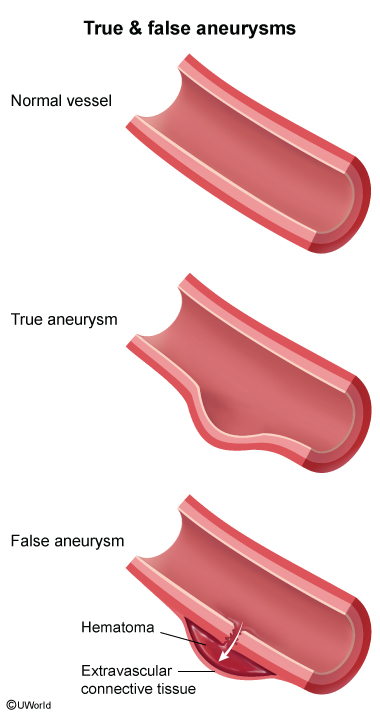
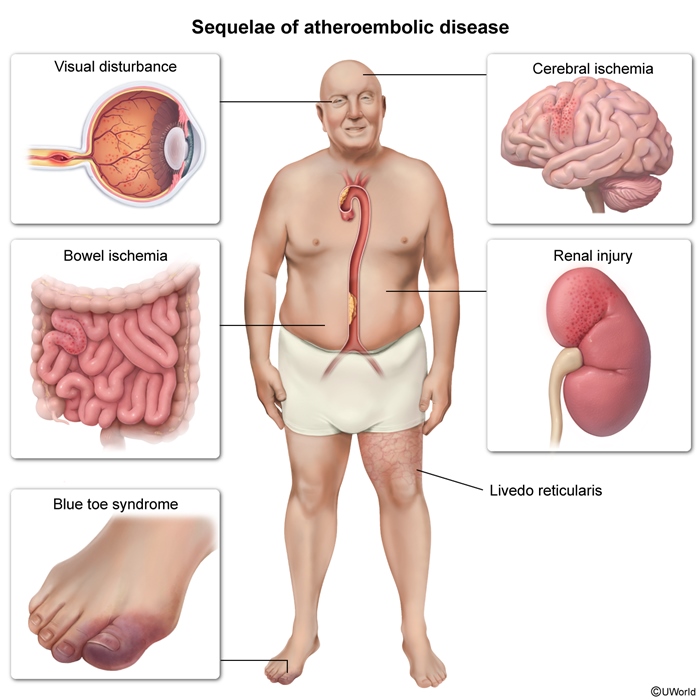
Images
